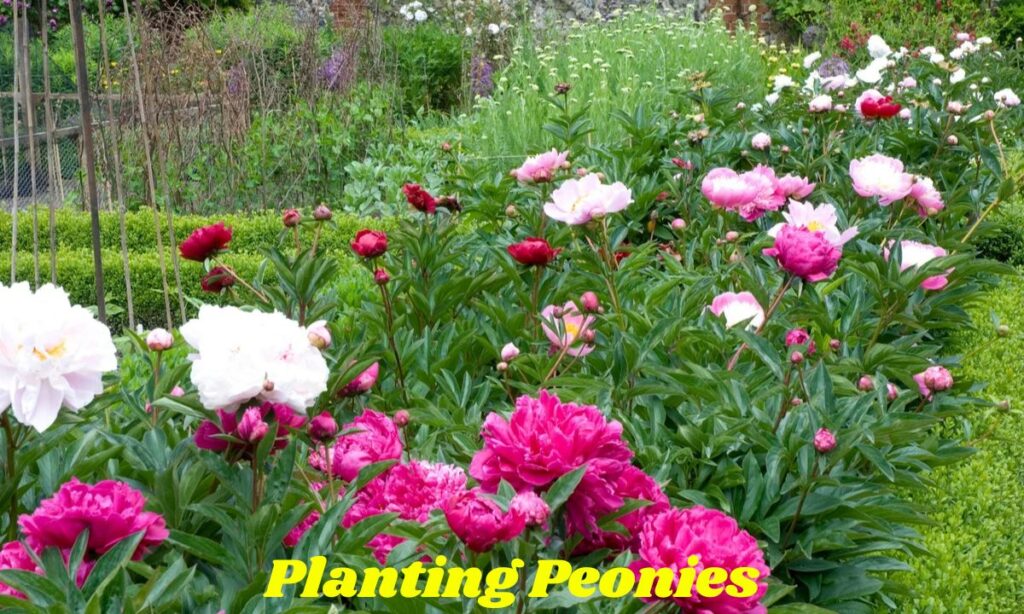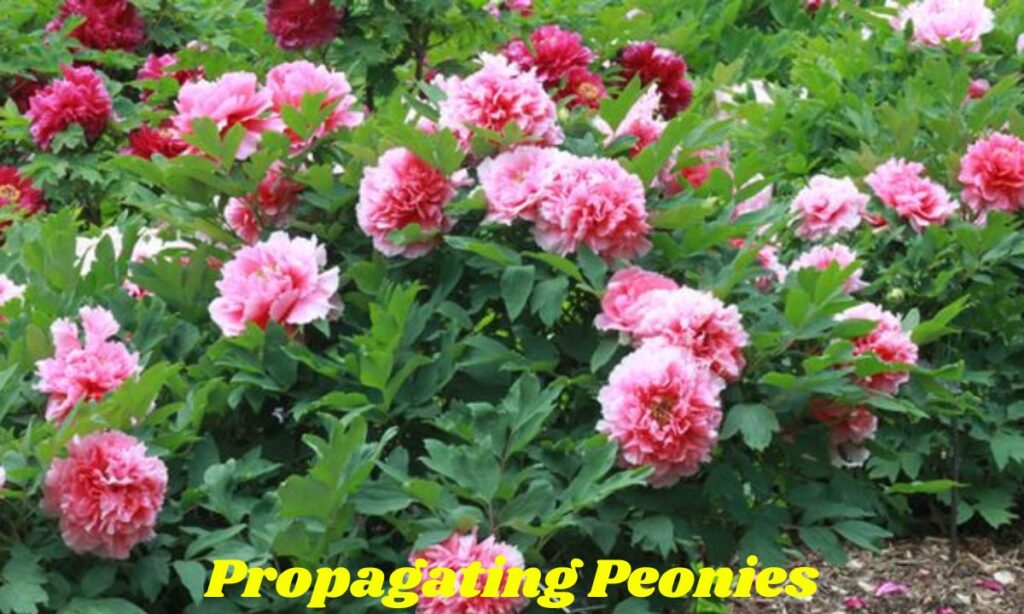Peonies are stunning flowering plants renowned for their large, fragrant blooms and lush foliage. These perennial favorites add beauty and elegance to any garden. With their rich colors and delightful scents, peonies can transform your landscape into a vibrant oasis.
Whether you are a seasoned gardener or a novice, learning how to grow peonies can enhance your gardening experience. This guide will provide you with all the information you need to successfully cultivate these magnificent flowers.
Understanding Peonies
Peonies are among the most beloved garden flowers, admired for their large, vibrant blooms and delightful fragrance. These perennials thrive in temperate climates and can live for decades with proper care. Available in various colors, peonies add timeless beauty to any garden setting.
To grow healthy peonies, plant them in well-drained soil and a sunny spot for optimal blooms. Regular watering and minimal fertilization are key, as peonies are low-maintenance plants. Pruning spent flowers ensures long-lasting growth and enhances their visual appeal year after year.
What Are Peonies?
Peonies are herbaceous perennials or shrubs characterized by their showy flowers that come in various colors, including pink, white, red, and yellow. They have a long history, cultivated for over three thousand years, and are native to Asia and Southern Europe.
These plants are celebrated not only for their beauty but also for their easy care requirements. Once established, peonies can thrive for many years with minimal intervention.
Types of Peonies
There are three main types of peonies:
- Herbaceous Peonies: These are the most common type. They die back to the ground in winter and regrow in spring. They are known for their vibrant blooms and robust growth.
- Tree Peonies: These are woody plants that retain some of their structure above ground during winter. They produce large, impressive flowers and can be more challenging to grow.
- Intersectional (Itoh) Peonies: These hybrids are a cross between herbaceous and tree peonies. They combine the best features of both, offering hardiness and stunning blooms.
Sunlight Requirements
Peonies thrive in full sunlight. Ideally, they need 6 to 8 hours of direct sunlight daily. In hotter regions, providing afternoon shade can protect the flowers from scorching. Ensuring adequate sunlight promotes healthy growth and vibrant blooms.
Soil Conditions
The soil is crucial for peony growth. Here are the key conditions:
- Well-draining, fertile soil is essential. Peonies do not thrive in heavy clay or overly sandy soils.
- The pH level should be slightly acidic to neutral, ideally between 6.5 and 7.0.
- Improve soil quality with organic matter such as compost or well-rotted manure to enhance fertility and drainage.
Climate Considerations
Peonies are hardy plants that can adapt to various climates, but they do have specific preferences:
- Most peony varieties thrive in USDA hardiness zones 3-8.
- They require a period of winter dormancy to flourish.
- In warmer zones (8-9), it is best to select early-blooming varieties to ensure they perform well.
Planting Peonies

Planting Peonies
Planting peonies is a rewarding task that begins with choosing the right location. Select a spot with full sunlight and well-drained soil to help the plants thrive. Proper spacing is essential, allowing 3–4 feet between each plant for healthy growth.
When planting, position the peony tubers just 1–2 inches below the soil surface. Planting them too deep can prevent blooming. Water thoroughly after planting and mulch lightly to retain moisture and protect the roots during colder months.
When to Plant
The timing for planting peonies depends on the type:
- Bare-root peonies should be planted in fall, about 6-8 weeks before the ground freezes.
- Container-grown peonies can be planted in either spring or fall.
How to Plant
Follow these steps for successful planting:
- Prepare the soil by digging a hole that is twice as wide and deep as the root ball.
- Mix in compost or well-rotted manure to enhance soil fertility.
- Position the peonies so that the eyes (growth buds) are no more than 2 inches below the soil surface.
- Backfill with soil and water thoroughly after planting.
Spacing
Proper spacing is vital for air circulation and growth:
- Herbaceous peonies: Space them 3-4 feet apart.
- Tree peonies: Space them 4-5 feet apart.
- Intersectional peonies: Space them 3-4 feet apart.
Caring for Your Peonies
Caring for peonies is simple, as they are hardy plants with minimal needs. Regular watering is essential, but avoid waterlogging, as it can damage the roots. Mulch around the plants helps maintain soil moisture and keeps weeds at bay.
Peonies benefit from annual pruning once the flowers fade. Cut back the stems to the ground in late fall or early spring to promote fresh growth. Fertilize sparingly in early spring to support strong blooms, and remove dead foliage to keep the plants healthy.
Watering
Peonies require moderate watering:
- Water deeply once a week, providing about 1 inch of water.
- Increase watering during dry spells, but be cautious of overwatering to avoid root rot.
Fertilizing
Regular fertilization helps promote healthy growth:
- Apply a balanced, low-nitrogen fertilizer in early spring.
- Side-dress with compost or well-rotted manure in late spring to boost nutrient levels.
Mulching
Mulching is beneficial for moisture retention and weed suppression:
- Apply a 2-3 inch layer of organic mulch around the base of the plants.
- Ensure the mulch is not piled against the crown to prevent rot.
Pruning
Pruning helps maintain plant health:
- Herbaceous peonies: Cut back to ground level in late fall after the first frost.
- Tree peonies: Remove dead or damaged wood in early spring.
- Intersectional peonies: Cut back herbaceous growth in fall while leaving woody stems intact.
Supporting Peonies
Many peonies, especially those with large blooms, benefit from support:
- Install peony rings or stakes in early spring before growth begins.
- Gently guide stems through the supports as they grow taller.
Common Peony Problems and How to Solve Them

Peonies are generally resilient, but they can face a few issues. One common problem is poor blooming, which may result from planting the roots too deep or inadequate sunlight. To solve this, ensure the plants receive at least 6 hours of sunlight daily and check the planting depth.
Another issue is fungal diseases like powdery mildew or botrytis blight. To prevent this, space the plants properly for good air circulation and avoid overhead watering. If diseases occur, trim infected areas and apply a fungicide as needed to keep your peonies healthy.
1. Botrytis Blight (Gray Mold)
Botrytis blight, also known as gray mold, is a common fungal disease that affects peonies, especially in humid conditions. It causes brown, mushy spots on petals and leaves, often turning gray. To control it, remove infected plant parts, ensure proper spacing, and apply fungicides to prevent further spread.
Solution:
- Improve air circulation by spacing plants adequately.
- Remove affected parts immediately to prevent spread.
- Use fungicides if necessary, especially in humid conditions.
2. Powdery Mildew
Powdery mildew is a fungal disease that appears as white, powdery spots on the leaves of peonies. It thrives in warm, dry conditions with poor air circulation. To control powdery mildew, increase airflow around the plants, remove affected leaves, and use fungicides as needed.
Solution:
- Water at the base to avoid wetting the foliage.
- Ensure good airflow by pruning surrounding plants.
- Apply fungicides if mildew persists.
3. Ants on Peony Buds
Ants are often seen on peony buds, attracted by the sweet nectar secreted by the flowers. While ants don’t harm the plant, they can protect aphids, which can damage peonies. To control ants, simply wash them off with water or use a gentle insecticidal soap if aphids are present.
Solution:
- Ants are generally harmless and can help protect your plants.
- If necessary, rinse the buds gently to remove ants without harming them.
4. Peony Leaf Spot (Cladosporium or Phyllosticta)
Peony leaf spot, caused by Cladosporium or Phyllosticta fungi, results in dark, round spots on leaves. This disease is more common in damp conditions and can cause premature leaf drop. To manage it, remove infected leaves, improve air circulation, and apply fungicides when necessary.
Solution:
- Remove infected leaves promptly.
- Use fungicides early in the growing season to prevent spread.
5. Peony Wilt (Phytophthora Blight)
Peony wilt, caused by Phytophthora blight, leads to sudden wilting and yellowing of the plant. This fungal disease thrives in overly wet soil and poor drainage. To prevent it, ensure proper drainage, avoid overwatering, and remove infected plant parts promptly.
Solution:
- Remove affected stems immediately.
- Ensure proper drainage and avoid overwatering.
6. Failure to Bloom
Peonies may fail to bloom due to improper planting depth, insufficient sunlight, or nutrient imbalances. If planted too deep, the buds may not develop properly. To encourage blooming, ensure they receive at least six hours of sunlight and are planted at the correct depth.
Solution:
- Check for proper planting depth; the eyes should be just below the soil surface.
- Ensure adequate sunlight; peonies need at least 6 hours of direct sun.
7. Root Rot
Root rot is caused by overly wet soil and poor drainage, leading to the decay of peony roots. Symptoms include yellowing leaves, wilting, and stunted growth. To prevent root rot, plant peonies in well-drained soil and avoid overwatering.
Solution:
- Ensure well-draining soil and avoid excessive watering.
- If rot occurs, transplant to a better-draining location.
8. Leaf Burn (Scorch)
Leaf burn, or scorch, occurs when peony leaves become dried, crispy, and browned at the edges due to intense heat or sun exposure. It often happens during hot, dry periods or if the plant is stressed from lack of water. To prevent scorch, ensure adequate watering and provide some afternoon shade during peak summer heat.
Solution:
- Water regularly, especially during hot weather.
- Apply mulch to retain moisture and provide some shade.
Propagating Peonies

Propagating peonies is typically done by dividing the plant’s roots during early spring or fall. Carefully dig up the root clump and use a sharp knife to separate sections, ensuring each division has at least one “eye” or bud. Replant the divisions in well-drained soil, keeping the eyes just below the surface.
Another method of propagation is from seed, though it takes longer to see results. Peony seeds need cold stratification, so they should be placed in a moist medium and stored in a cool place for several months before planting. Patience is key when propagating from seeds, as it can take several years for them to bloom.
Division
- Best for herbaceous and intersectional peonies.
- Divide in fall after foliage has died back. Ensure each section has 3-5 eyes for successful replanting.
Grafting
- Primarily used for tree peonies.
- Take a scion from the desired tree peony and graft onto herbaceous rootstock in late summer.
Enjoying Your Peonies Flowers
Peonies offer a stunning display of large, fragrant blooms that can enhance any garden or home. Their vibrant colors and rich textures make them perfect for cut flower arrangements. To enjoy them indoors, cut the flowers early in the morning when buds are still slightly closed.
Beyond their beauty, peonies have a delightful fragrance that fills the air in late spring and early summer. Whether displayed in a vase or growing in the garden, these flowers provide joy for weeks. Simply sit back and admire their charm as they bloom and flourish, season after season.
Cutting for Arrangements
Peonies make excellent cut flowers:
- Cut when the buds are tight but show color.
- Place in cool water and change it every few days to extend their vase life.
Photographing Peonies
Capture their beauty through photography:
- Photograph during the early morning or late afternoon for the best light.
- Experiment with angles to highlight their unique features.
Preserving Peonies
Extend the enjoyment of your blooms:
- Press petals for dried arrangements.
- Use silica gel for drying whole blooms to create long-lasting decorations.
Peonies in Garden Design
Incorporate peonies into your landscape:
Companion Planting
Pair peonies with complementary plants:
- Use spring-flowering bulbs like tulips and daffodils.
- Combine with late-blooming perennials for extended color.
Landscape Uses
Peonies are versatile in garden settings:
- Use them as focal points in mixed borders.
- Incorporate them in formal garden designs or cottage gardens for a whimsical touch.
Conclusion
Growing peonies is a rewarding experience that brings beauty and fragrance to your garden year after year. With proper care and attention, these elegant perennials will thrive and provide stunning blooms every spring.
Patience is key; newly planted peonies may take a few years to establish, but the wait is worthwhile. As you gain experience, you’ll enjoy experimenting with different varieties, colors, and forms, creating a diverse and captivating peony collection in your garden.
Frequently Asked Questions
How long do peonies take to bloom after planting?
Peonies typically take 2-3 years to bloom after planting, depending on the variety and care.
Can peonies grow in shade?
Peonies prefer full sun but can tolerate partial shade. However, this may affect blooming.
What is the best fertilizer for peonies?
A balanced, low-nitrogen fertilizer is ideal for promoting healthy growth and blooms.
How do I know if my peonies need water?
Check the top 1-2 inches of soil; if it’s dry, it’s time to water your peonies.
Can I grow peonies in pots?
Yes, peonies can be grown in pots, but ensure the container has good drainage and is large enough for root growth.
For more detailed information and updates, visit newsbreakinfo

FAtima is a talented content writer and digital marketer with expertise in SEO, social media management, and online marketing.










